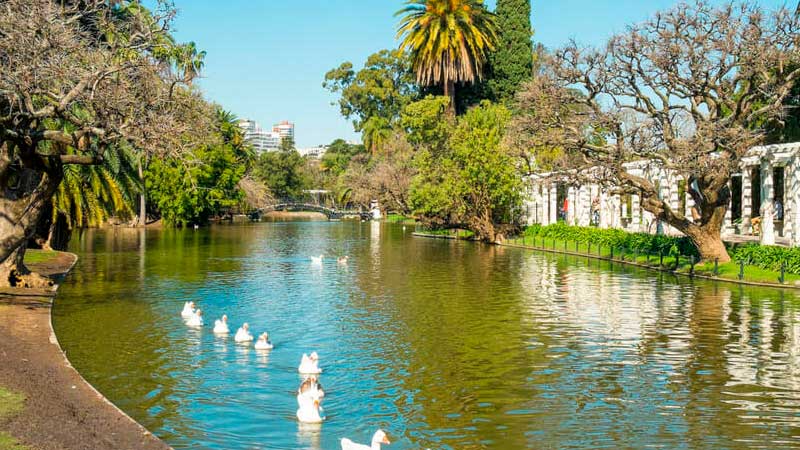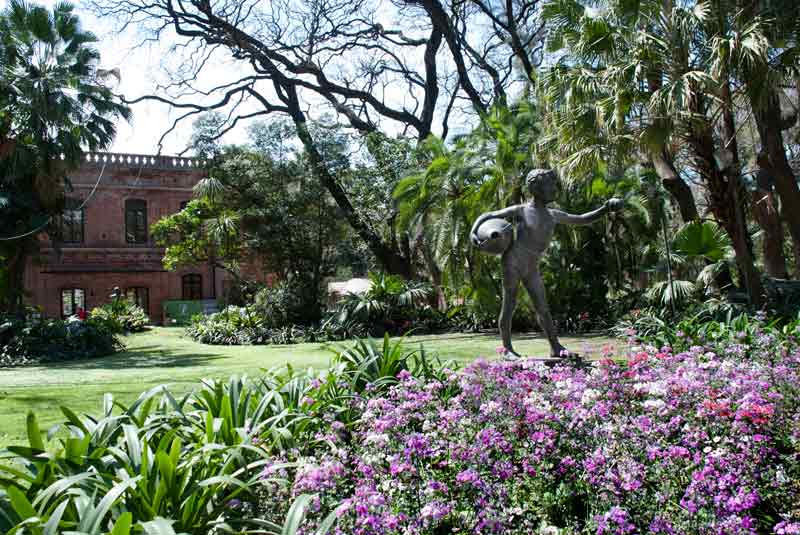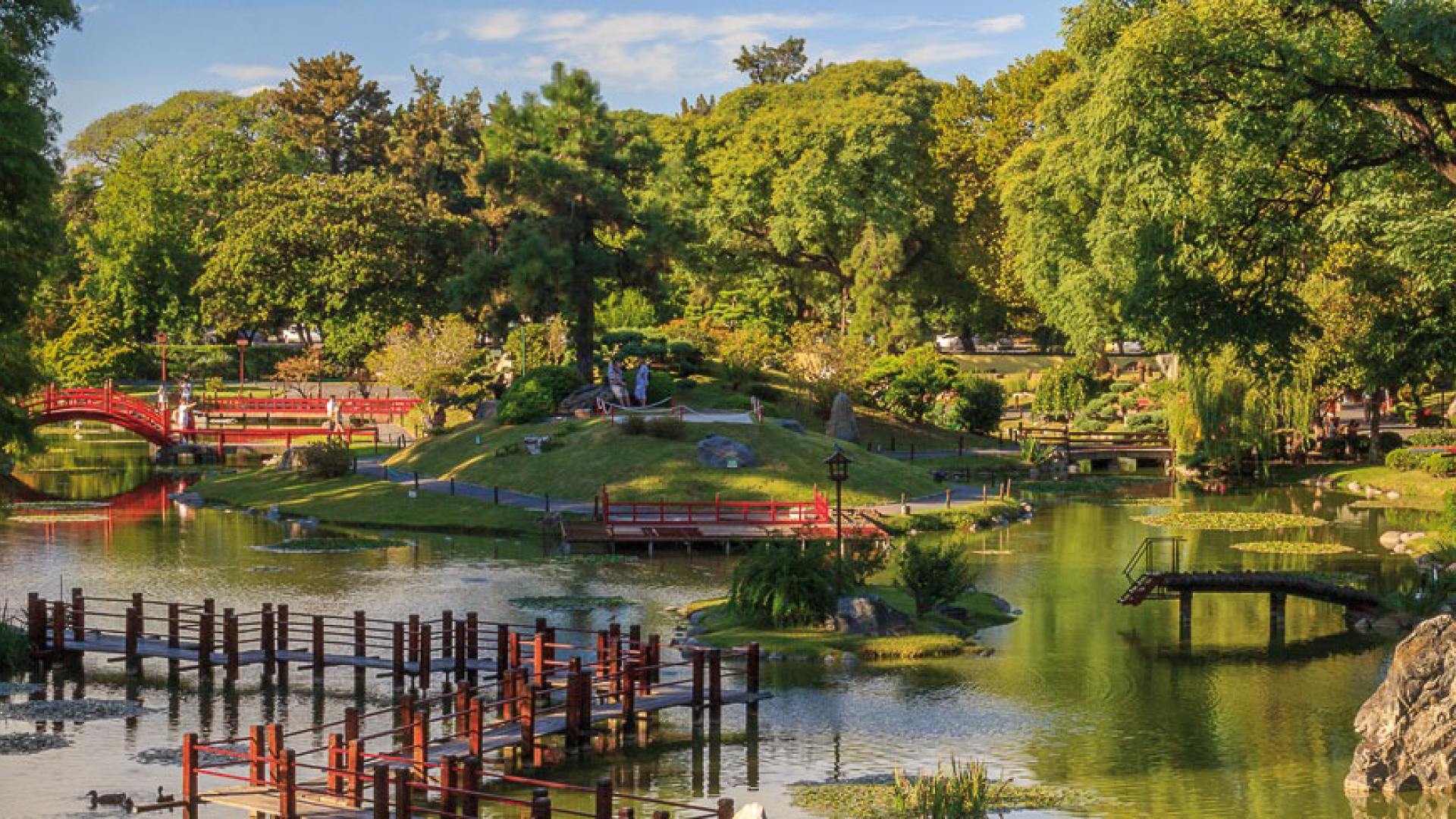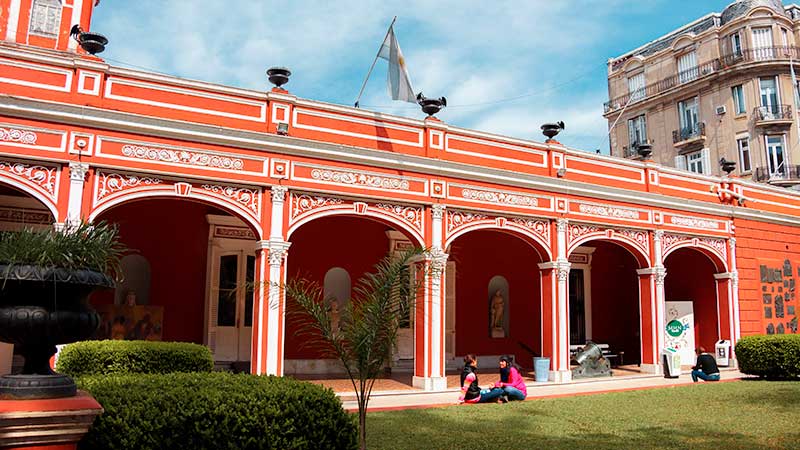Popularly known as the Bosques de Palermo, Tres de Febrero Park is the most emblematic green space in the City. Its forests, its 4 lakes (Lago Regatas, Lago del Rosedal, Lago del Planetario and Lago Victoria Ocampo), its plazas (did you know that it is made up of 29 plazas!?) and the different walks that extend over 370 hectares from the Palermo neighborhood.
Within the property, you will find free access areas, which occupy the largest portion of the Park, such as the squares, the promenades and the Rose Garden .
Others are of restricted use, such as the Golf Course , the Japanese Garden , the “Eduardo Sívori” Museum of Plastic Arts or the “Galileo Galilei” Planetarium .
There are also areas that depend on the National Government, within which the Palermo Hippodrome stands out, others that were concessioned to clubs or other organizations and also spaces that were sold.
It is ideal to spend the day or go for a walk and rest. You can have a picnic under the leafy grove or looking at its lakes, explore those bodies of water in one of its famous little boats or on their water bikes, do physical activity (there are many internal pedestrian paths, bike paths and aerobic posts) or buy the entrance to explore the Planetarium, the Sívori Museum or the Japanese Garden.
Pure nature
In Plaza Holanda, there is El Rosedal , an incredible garden with more than 93 different species of roses and 12,000 rose bushes. It is one of the most visited spaces in Parque Tres de Febrero and its design was awarded, in 2012, with the Garden Excellence Award, granted by the World Federation of Rose Societies (WFRS). The most common species are the Sevillian rose, bright red, the Johan Strauss, the Charles Aznavour and the Frederic Mistral (all three in pink tones) and the Elina, light yellow. Very close to there is the amphitheatre, an Andalusian patio and the Garden of Poets, with the busts of different famous poets and writers such as Alfonsina Storni, Dante Alighieri, William Shakespeare, among others.
It is estimated that the forests have more than ten thousand trees, many of which are tipas, eucalyptus, fellings and ombúes.
Different species of birds build their nests in these colorful forests and, next to the park's lakes, you will enjoy swans, herons and ducks. The Palermo Bird Observers Club registers the variety of bird species and organizes bird watching trips and different activities within the park.
Among the characteristic species of fish, there are the tarariras, the catfish, the dientudos, the green pomfret and the seven colors; there are also eels, carp, moray eels and freshwater shrimp.
some history
It was inaugurated on November 11, 1875 at the initiative of then President Domingo Faustino Sarmiento. Although it is popularly known as the Bosques de Palermo or Lagos de Palermo, the Tres de Febrero park bears that name as a tribute to the Battle of Caseros. It was an original project by the architects Ernesto Oldendorf, Fernando Mauduit and Jordan Wysocky, which ended up being finalized by the architect Jules Dormal (one of the builders of the Teatro Colón and the National Congress ).
Between 1892 and 1913, extensions were made by the renowned French landscaper Carlos Thays, who also designed the Botanical Garden and Centennial Park , among many other green spaces in the City.



